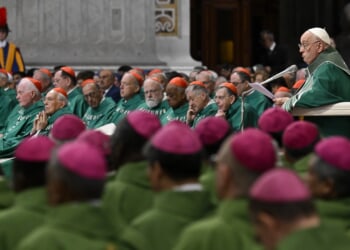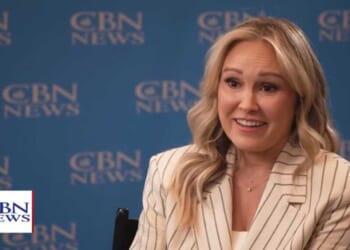Up and down the country, councils are casting their eyes over budgets for the upcoming financial year. From cabinet to full council, there will, no doubt, be many a lively discussion. What we know for certain about the outcome will be that virtually all will end up rubber-stamping another round of above-inflation tax hikes and brutal cuts to budgets, including frontline services. For millions, those tax rises won’t be capped at five per cent like in most of England. In Wales, as in Scotland, there is no cap. In Windsor and Maidenhead, Trafford, Newham and elsewhere, special permission has been granted to increase rates above the referendum threshold.
The extent to which all of this is necessary won’t become completely clear until council accounts are published in the summer. But looking at 2023/24, when the average council tax rise in England was around the five per cent mark, it looks very much like many of the tax rises weren’t entirely necessary.
New research from us at the TaxPayers’ Alliance has found that almost half of councils surveyed saw their usable reserves increase in 2023/24. What does that mean? Some background for the uninitiated. Local authorities are, by law, required to set a balanced budget – they have not the luxury of politicians in Westminster who can always borrow more, however inadvisable this may be. When setting a budget, councils calculate their expenditure for the upcoming year. Subtract from that business rates, government grants, and any other sources of revenue, then they’re left with how much they need from council tax.
When determining how much they need in Council Tax, there is another critical element to consider – reserves, ie how much spare funding the council has beyond their annual revenues. What really matters in this context is “usable” reserves as opposed to “unusable” reserves. The latter is essentially calculated for accounting purposes – it is not cash backed and instead reflects changes in a council’s assets and liabilities. In the former case, though, we are talking, essentially, about cash. Now if a council wants to draw on its usable reserves, it’s not as simple as getting cash from the bank. Even usable reserves can be earmarked or ringfenced for specific purposes. Only the “general fund” reserves have no specific statutory restrictions on use.
What, then, is the purpose of these General Fund reserves? Well just like a household will try and put money away for a rainy day, so will local councils. And that’s completely normal. Ensuring there is liquidity to smooth cash flows, or address unexpected events or emergencies, is vital – to fail to do so would be a dereliction of duty.
But looking out the window, it certainly looks like a rainy day now. It may not be the hailstorm of covid, but it’s coming down pretty hard. Despite a healthy boost in central government funding, not a day goes by without a handful of stories about proposed cuts to services. Just recently we at the TPA revealed that one in ten are considering reducing their bin collection services. And putting aside the difficulties with council budgets, what about the budgets of those they are supposed to serve? Millions of pensioners have taken a financial hit with the means-testing of the winter fuel allowances, while many millions more who are in work are going to see access to promotions limited, pay rises delayed or reduced and bonuses cut or scrapped once the national insurance hikes come in. And it’s been far from rosy up until now. As we grimly pointed out recently, Brits are suffering a “personal recession”, with two successive quarters in which GDP per capita fell. They’ve swallowed successive years of above-inflation council tax hikes to boot.
Yet last year, while the average council saw reserves shrink slightly, dozens filled up their coffers. Epping Forest added £86 million to their reserves, Milton Keynes £79 million and North Yorkshire and Leicestershire £61 million a piece. Remarkably, Trafford saw one of the largest increases in usable reserves in the country, despite recently being granted a 7.5 per cent council tax increase. Interestingly, none of the councils who have recently been granted exceptions to the referendum rule feature in the bottom twenty of usable reserves by resident.
Clearly there are town halls who are using council tax increases to replenish their coffers. Where this is because reserves have fallen dangerously low, this is reasonable. But this is not always the case.
Central government should make two changes to adjust to this: one to increase autonomy, the other to reduce it. Firstly on the latter. At the moment council tax referendum caps are crude – they are applied universally to categories of local authority, with exceptions made for those who cry wolf convincingly. But where councils have above average reserves, referendum caps should be lower to adjust for that fact. The flipside is that too much government funding is ring-fenced. This diminishes the ability of councils to manage their own funding. Here, governments should move away from ring-fencing, and start providing greater flexibility as to how resources are used.
To any local councillor reading this and preparing for a budget meeting, interrogate the state of your council’s reserves: if healthy, then at the very least you should be asking whether council tax rises could be restrained.





![Trump's Admin Guts Another ‘Rogue Government Agency with Zero Accountability’ [WATCH]](https://www.right2024.com/wp-content/uploads/2025/03/Trumps-Admin-Guts-Another-‘Rogue-Government-Agency-with-Zero-Accountability-350x250.jpg)



![‘We All Owe Him (Elon) a Huge Debt of Gratitude’ [WATCH]](https://www.right2024.com/wp-content/uploads/2025/03/‘We-All-Owe-Him-Elon-a-Huge-Debt-of-Gratitude-350x250.jpg)

![NCAA Champ Salutes President Trump After ‘BIGGEST UPSET IN COLLEGE WRESTLING HISTORY’ [WATCH]](https://www.right2024.com/wp-content/uploads/2025/03/NCAA-Champ-Salutes-President-Trump-After-‘BIGGEST-UPSET-IN-COLLEGE-350x250.jpg)





